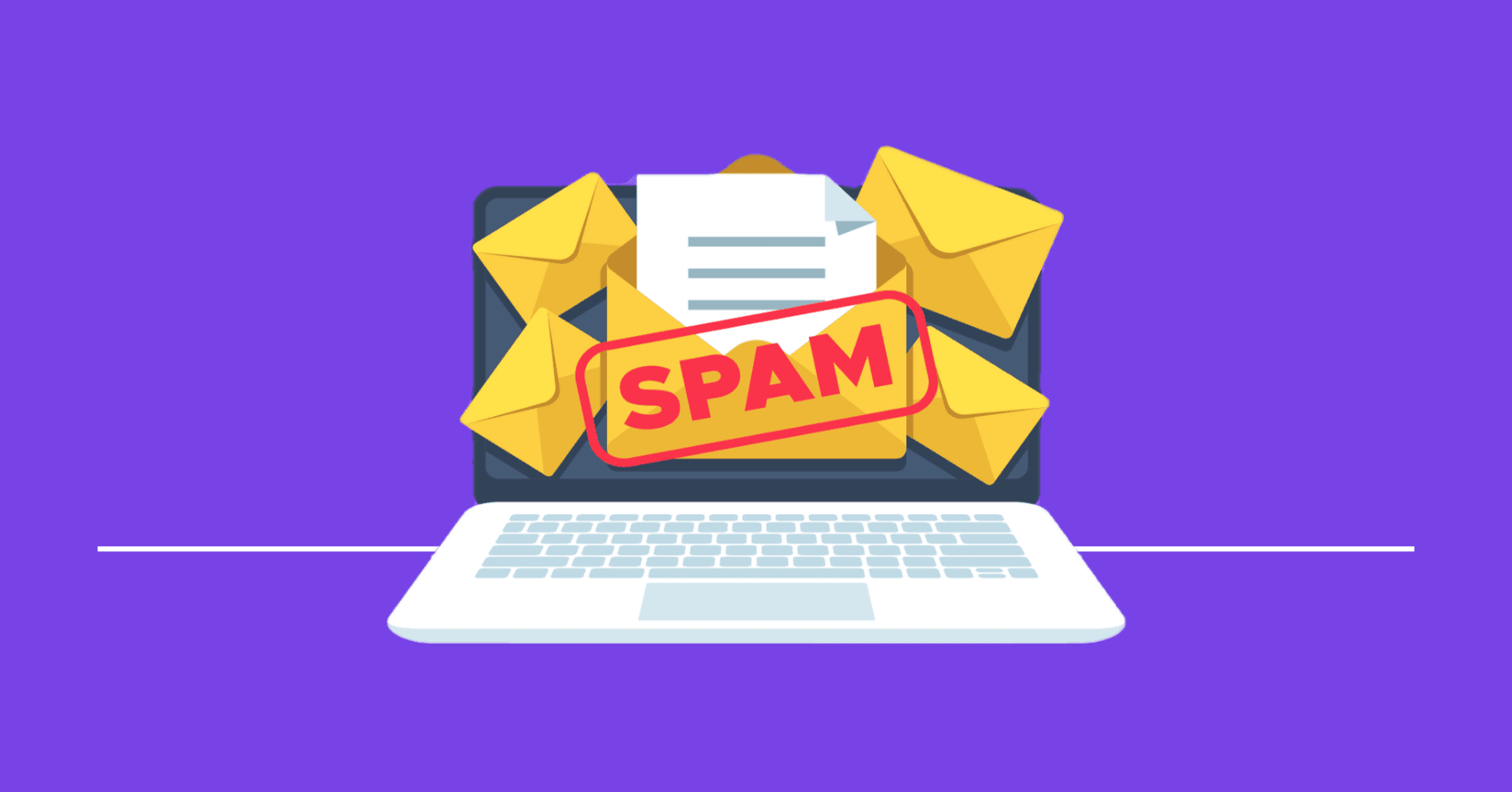Spam emails are unwanted messages sent in bulk. They often contain advertisements or scams.
In today’s digital age, spam emails are a common nuisance. They clutter inboxes, waste time, and can even pose security risks. Understanding what spam emails are is crucial for protecting yourself online. Spam emails can range from annoying ads to dangerous phishing attempts.
Learning to identify and manage these emails helps keep your inbox clean and your personal information safe. This blog post will explain what spam emails are, why they exist, and how to deal with them effectively. Stay tuned to safeguard your email from unwanted intrusions.

Credit: popupsmart.com
Introduction To Spam Emails
Spam emails are a common nuisance in our digital lives. They clutter inboxes and often contain unwanted content. Understanding spam emails helps in managing and avoiding them.
Definition And Characteristics
Spam emails are unsolicited messages sent in bulk. These emails often come from unknown senders and are not requested by the recipient. Common characteristics include:
- High volume: Sent to many recipients at once.
- Unsolicited: Not requested by the recipient.
- Promotional content: Often include advertisements or promotions.
- Deceptive headers: Mask the sender’s identity.
Spam emails can also contain harmful content. Examples include phishing links or malware attachments. Therefore, it is important to identify and avoid these emails.
History And Evolution
Spam emails have been around since the early days of the internet. The first known spam email was sent in 1978. It was an advertisement for a computer product. As the internet grew, spam emails became more common.
In the 1990s, spam emails evolved. Spammers found new ways to reach more people. This led to the creation of spam filters and anti-spam laws.
Over time, spam emails have become more sophisticated. Modern spam emails often use social engineering tactics. They trick recipients into revealing personal information. Therefore, understanding the history and evolution of spam emails helps in staying protected.
| Year | Event |
|---|---|
| 1978 | First known spam email sent |
| 1990s | Spam emails became more common |
| 2000s | Introduction of anti-spam laws |
| Present | Spam emails use advanced techniques |
Spam emails are an evolving challenge. Staying informed helps protect your inbox and personal information.
Common Types Of Spam Emails
Spam emails clutter your inbox. They come in many forms. Each type poses a unique threat. Knowing these types helps you stay safe.
Phishing Emails
Phishing emails try to steal your information. They look like they come from trusted sources. These emails ask for your passwords, credit card numbers, or social security numbers. Clicking on links in these emails can lead to fake websites. These sites then capture your details.
Malware And Viruses
Some spam emails contain malware. Malware is harmful software. These emails may have attachments or links. Opening them infects your computer. Viruses can then spread to other systems. They can steal data, damage files, or cause other harm.
Marketing And Promotional Spam
Not all spam is dangerous. Some emails promote products or services. These marketing emails can be annoying. They often come from companies you have never heard of. While they are not harmful, they do clutter your inbox. Unsubscribing from these emails can help reduce the clutter.
How To Identify Spam Emails
Understanding how to identify spam emails can protect you from online threats. Spam emails often contain malicious links, fraudulent content, and harmful attachments. Recognizing these emails is crucial for your security. Here are key signs to look for:
Suspicious Subject Lines
Spam emails often have catchy or alarming subject lines. They aim to grab your attention. Common phrases include:
- “You won a prize!”
- “Urgent: Account suspended!”
- “Quick, open now!”
Be cautious if the subject line seems too good to be true.
Unfamiliar Senders
Always check the sender’s email address. Spam often comes from unrecognized or strange addresses. Look out for:
- Email addresses with random numbers or letters (e.g., abc123@example.com)
- Domains that don’t match the supposed sender (e.g., an email from “PayPal” but with a different domain)
If you don’t know the sender, be wary of opening the email.
Urgency And Threats
Scammers use urgency to make you act quickly. They may use threats or scare tactics. Examples include:
- “Act now or your account will be closed.”
- “Immediate action required to avoid penalties.”
- “Your account has been hacked. Change your password now!”
Take a moment to evaluate these claims before responding.
| Sign | Description |
|---|---|
| Suspicious Subject Lines | Catchy or alarming phrases designed to grab attention. |
| Unfamiliar Senders | Email addresses that are strange or unrecognized. |
| Urgency and Threats | Messages that create a sense of urgency or fear. |
Red Flags In Spam Emails
Spam emails can be tricky to spot. But, there are some common signs. Recognizing these red flags can help you avoid falling victim to scams. Below are some key indicators to watch for in spam emails.
Poor Grammar And Spelling
One of the first signs of a spam email is poor grammar and spelling. Legitimate companies usually proofread their emails. They ensure that their messages are clear and error-free. If you notice many mistakes, be cautious. It could be a spam email.
Unusual Attachments
Spam emails often contain unusual attachments. These attachments can be dangerous. They might contain viruses or malware. Be wary of emails with strange file types. Common safe file types include .pdf and .doc. Files with extensions like .exe or .zip should raise a red flag.
| Safe File Types | Suspicious File Types |
|---|---|
| .exe | |
| .doc | .zip |
Links To Unfamiliar Websites
Links to unfamiliar websites are another common feature of spam emails. Always hover over links to check their destination. Be cautious if the URL looks strange or unfamiliar. Legitimate companies usually use their own domain names. If the link does not match the sender, do not click it.
Here are some tips to identify suspicious links:
- Hover over the link to see the full URL.
- Check for misspelled domain names.
- Look for extra characters in the URL.
Tools For Filtering Spam
Spam emails can clutter your inbox and waste your time. Finding the right tools to filter these unwanted messages is crucial. Below are some effective solutions to keep your inbox clean and organized.
Email Provider Filters
Most email providers offer built-in spam filters. These filters automatically move suspicious emails to the spam folder. Providers like Gmail, Yahoo, and Outlook are good examples. Their algorithms analyze email content and sender details. They block emails that seem suspicious. Adjust settings to match your needs. You can mark specific emails as spam, helping the filter learn.
Third-party Software
Third-party software adds an extra layer of protection. These programs work with your email provider to filter spam. Examples include SpamTitan, MailWasher, and CleanMail. They offer advanced features. Some can block phishing attempts and malware. They often allow more customization. Download and install these tools to enhance your email security.
Custom Filters
Create custom filters to manage spam more effectively. Set specific rules based on keywords or sender addresses. For instance, filter out emails containing certain phrases. Move them directly to the spam folder. This method gives you greater control. Most email providers support custom filters. Check your settings to create and adjust these rules. This helps in blocking unwanted emails that default filters might miss.

Credit: proton.me
Best Practices To Avoid Spam
Spam emails are a nuisance. They clutter your inbox and pose security risks. Following best practices can help you avoid these unwanted emails. Here are some effective methods to keep your inbox clean and safe.
Be Cautious With Personal Information
Do not share your email address on public websites. Be selective about signing up for newsletters or offers. Use a secondary email for such purposes. Avoid providing personal details on unknown sites. This reduces the chances of your information being exploited.
Avoid Clicking On Suspicious Links
Never click on links from unknown senders. These links may lead to malicious websites. Hover over links to see the URL before clicking. If it looks odd, do not click. Always verify the sender’s email address. Even if the email seems familiar, it might be a trick.
Regularly Update Security Settings
Keep your email security settings up to date. Use strong, unique passwords for your email accounts. Enable two-factor authentication for added security. Regularly update your antivirus software. This helps in detecting and blocking spam.
Reporting Spam Emails
Spam emails flood our inboxes daily. They can be annoying and dangerous. Reporting spam emails helps keep your inbox clean and protects your data. Here are some ways to report spam emails effectively.
Using Email Provider Tools
Most email providers offer built-in tools to report spam. These tools are easy to use and effective.
- Gmail: Open the spam email. Click the “Report Spam” button.
- Outlook: Select the spam email. Click “Junk” and then “Report as Junk”.
- Yahoo Mail: Open the spam email. Click the “Spam” button.
Using these tools helps your email provider filter out spam emails better.
Reporting To Authorities
Reporting spam to authorities can reduce spam emails over time. Here are some organizations you can report to:
| Authority | How to Report |
|---|---|
| Federal Trade Commission (FTC) | Forward the spam email to spam@uce.gov |
| Internet Crime Complaint Center (IC3) | Visit www.ic3.gov and file a complaint |
Educating Others
Educating others about spam emails is crucial. It helps them recognize and report spam effectively. Here are some tips to share:
- Do not open emails from unknown senders.
- Do not click on links in suspicious emails.
- Use strong, unique passwords for your email accounts.
Sharing this knowledge can create a safer online environment for everyone.

Credit: www.helloleads.io
Impact Of Spam Emails
Spam emails are more than just a nuisance. They impact productivity, security, and finances. Understanding the impact of spam emails can help in taking necessary precautions. Let’s explore the key areas affected by spam emails.
Security Risks
Spam emails often carry malicious links or attachments. These can infect your computer with viruses. They can steal personal information. This puts your data at risk. Cybercriminals use spam to spread malware. This can lead to identity theft. It can also result in unauthorized access to sensitive information. Protecting your inbox from spam is crucial for security.
Productivity Loss
Dealing with spam emails takes time. Sorting through unwanted messages can be frustrating. It distracts from important tasks. This leads to decreased productivity. Employees spend valuable time deleting spam. This reduces overall efficiency. A cluttered inbox makes it hard to find important emails. Productivity suffers as a result.
Financial Consequences
Spam emails can lead to financial losses. Phishing scams trick people into giving financial information. This can result in unauthorized transactions. Businesses may face significant costs. They need to deal with the aftermath of spam attacks. Recovery efforts can be expensive. Spam can also lead to lost revenue. Customers may be wary of doing business with companies affected by spam.
Frequently Asked Questions
What Are Spam Emails?
Spam emails are unsolicited messages sent in bulk, often for advertising purposes. They typically contain irrelevant or inappropriate content.
Why Are Spam Emails Harmful?
Spam emails can spread malware, phishing attacks, or scams. They can compromise your personal information and clutter your inbox.
How Can I Identify Spam Emails?
Spam emails often have generic greetings, poor grammar, suspicious links, and unexpected attachments. They may also request personal information.
How To Stop Receiving Spam Emails?
Use a spam filter, unsubscribe from unwanted emails, and avoid sharing your email address publicly. Regularly update your email security settings.
Conclusion
Spam emails are a daily nuisance. They clutter your inbox and waste time. Stay alert and protect your information. Use spam filters and avoid unknown links. Staying informed helps you avoid scams. Keep your email secure and report suspicious messages.
Remember, vigilance is key. Protect yourself and enjoy a spam-free inbox.
